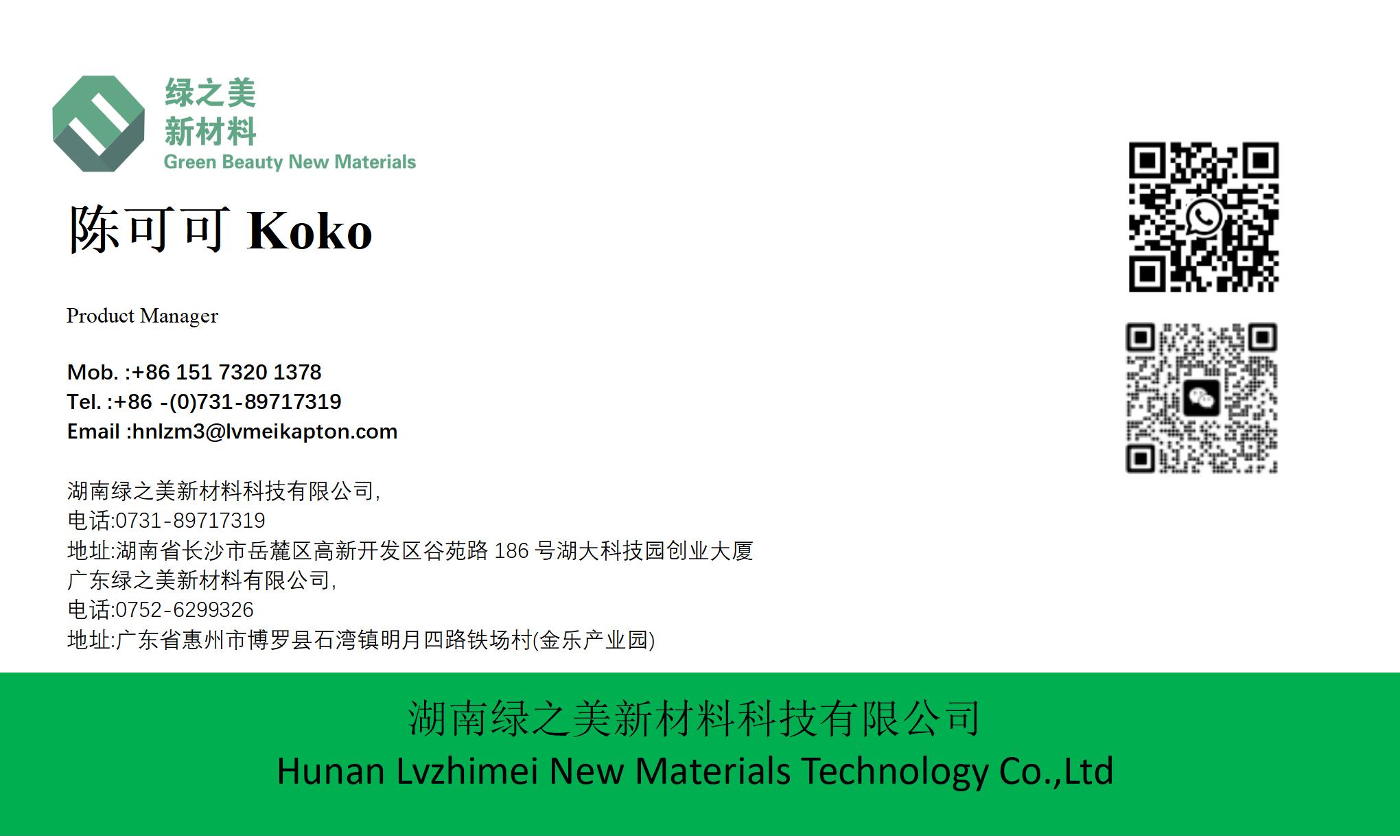hnlzm@lvmeikapton.com
+86 13787123465


Hunan Lvzhimei New Material Technology Co., Ltd.


NameDescriptionContent
Why Should Manufacturers Prioritize "PI material high temperature resistant 300 tape" for Gold Finger PCBs? |https://www.lvmeikapton.com/
Source:
|
Author:Koko Chan
|
Published time: 2025-07-23
|
22 Views
|
Share:
This article explains why "PI material high temperature resistant 300 tape" is critical for gold finger PCBs, focusing on its heat resistance, adhesion, and compatibility. It includes "Strong adhesion and blocking high temperature tape", "lvmeikapton insulating electrical tape", and others, highlighting its role in preventing defects.

This article explains why "PI material high temperature resistant 300 tape" is critical for gold finger PCBs, focusing on its heat resistance, adhesion, and compatibility. It includes "Strong adhesion and blocking high temperature tape", "lvmeikapton insulating electrical tape", and others, highlighting its role in preventing defects.
Gold finger PCBs—used in servers, EVs, and aerospace electronics—demand tapes that withstand extreme heat, protect delicate gold plating, and ensure reliable performance. "PI material high temperature resistant 300 tape" stands out as a priority for manufacturers, thanks to its unique ability to meet these demands. This article explores why it outperforms alternatives, integrating "Strong adhesion and blocking high temperature tape", "lvmeikapton insulating electrical tape", and other variants to safeguard gold fingers.
Extreme Heat Resistance is its defining trait. Gold finger PCBs undergo reflow soldering (280–300°C) and, in some cases, operational temperatures up to 250°C (e.g., in engine bays). "PI material high temperature resistant 300 tape" withstands 300°C continuously, far exceeding "Adhesive PET material high temperature tape" (150°C) and even aluminum tape (260°C). In tests, it remained stable after 1,000 hours at 300°C, while PET tape degraded, leaving gold fingers exposed to solder bridging. This stability prevents defects like short circuits, reducing rework rates by 40% in high-volume production.
Strong Adhesion Under Thermal Stress ensures protection. Its silicone adhesive maintains grip during temperature fluctuations, critical for gold fingers expanding/contracting during soldering. "Strong adhesion and blocking high temperature tape" shares this trait, but "PI material high temperature resistant 300 tape" adds extreme heat tolerance. For example, in aerospace PCB manufacturing, where gold fingers undergo 300°C annealing, the tape stays bonded, preventing oxidation of underlying copper—a common cause of gold layer delamination.
Compatibility with Gold Plating prevents damage. Gold fingers have thin plating (0.1–0.5μm) easily scratched or peeled. "PI material high temperature resistant 300 tape" uses a low-tack silicone adhesive that peels cleanly, leaving no residue. This contrasts with aggressive rubber adhesives, which can lift gold layers, requiring costly re-plating. A study with 5,000 PCBs found that using this tape reduced gold plating defects by 25% compared to traditional tapes.
Electrical Insulation Synergy with "lvmeikapton insulating electrical tape" enhances safety. Gold finger PCBs in high-voltage applications (e.g., EV batteries) need both heat resistance and insulation. "PI material high temperature resistant 300 tape" protects during soldering, then "lvmeikapton insulating electrical tape" adds dielectric strength (>10kV/mm) post-assembly. This combination prevents short circuits in 400V systems, a risk with non-insulating tapes.
Chemical Resistance safeguards gold fingers during cleaning. Gold finger PCBs are cleaned with solvents like acetone to remove flux. "PI material high temperature resistant 300 tape" resists these chemicals, unlike PET tapes that swell or dissolve. In one facility, using this tape reduced solvent-related gold finger contamination by 30%, as the tape acted as a barrier against harsh cleaners.
Cost Efficiency over time justifies its use. While more expensive than PET tape, "PI material high temperature resistant 300 tape" reduces long-term costs: fewer defects, less rework, and longer PCB lifespans. A server manufacturer reported a 15% lower total cost of ownership after switching, despite higher upfront tape expenses.
The table below quantifies its benefits for gold finger PCBs:
Metric | With "PI material high temperature resistant 300 tape" | With Alternatives (e.g., PET) | Improvement |
Defect Rate (Solder Bridges) | 1.2% | 5.8% | -79% |
Gold Plating Damage | 0.8% | 3.2% | -75% |
Rework Time per PCB | 2 minutes | 8 minutes | -75% |
PCB Lifespan (High Heat) | 10+ years | 3–5 years | +100% |
In conclusion, "PI material high temperature resistant 300 tape" is indispensable for gold finger PCBs, offering unmatched heat resistance, adhesion, and compatibility. When paired with "lvmeikapton insulating electrical tape" and "Strong adhesion and blocking high temperature tape", it ensures reliable, defect-free production—critical for electronics where gold finger performance directly impacts functionality.


Hunan Lvzhimei New Material Technology Co., Ltd.
Quick Links
Product Categories
© 2024 Hunan Lvzhimei New Material Technology Co., Ltd.All Rights Reserved. Designed by Erge
0731 - 89717319
hnlzm@lvmeikapton.com
+86 13787123465
Room 502, Chuangye Building, No186, Guyuan Road, High-Tech District, Changsha, Hunan, China
CONTACT



